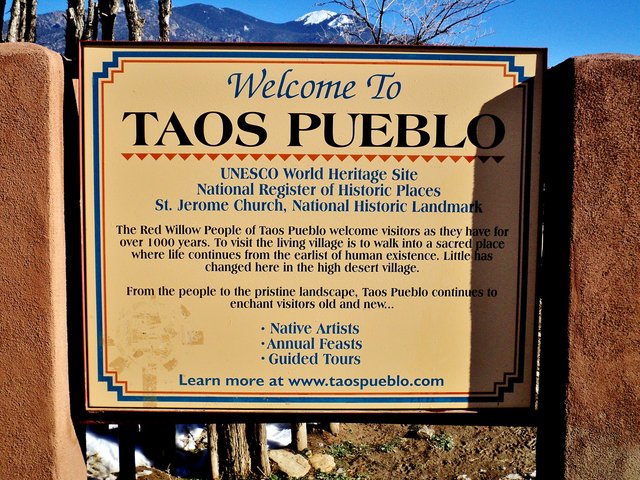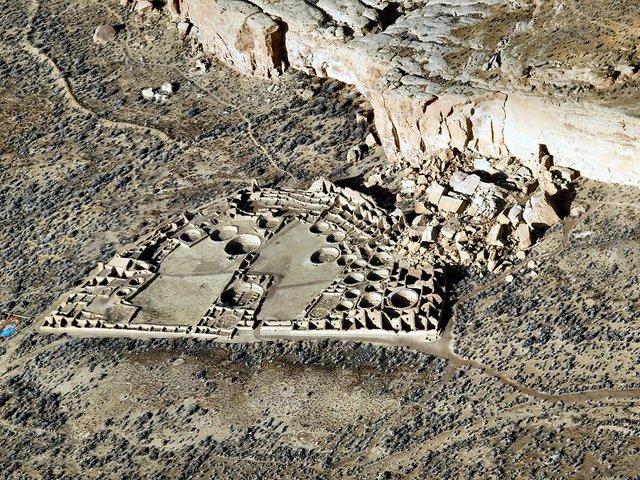A forgotten settlement in the desert
Surrounded by hostile tribes, the Pueblo Indians of New Mexico, needed dwellings that had to provide fortresses and housing. Beneath a massive cliff, they built their city, a vast apartment block of 800 rooms.
It was in 1849 that Lt James Simpson of the American army of a punitive expedition in New Mexico against a group of Navajo Indians. He set up camp near the ruins of a massive dwelling. He later described that day in a journal : "300 hundred yards down the canyon, we came across another old Pueblo in ruins called Pueblo Bonito. The circuit of its walls about 396 metres. It's elevation showed at least 4 stories of apartments."

Pueblo Bonito ( pretty village) in Spanish is a remarkable monument to a North American Indian culture that flourished 500 years before Columbus set sail for the New World. Its inhabitants were a Stone Age people who left no record of of their culture. It is possible, however, to read their story from the shards of broken pottery and other signs of a maze of deserted rooms. Thanks to archaeologists, secrets which can now brought to light.
Its curious how such a tribe could just vanished. Where did they go? Who are their ancestors? At least we know why they left their amazing settlement. They were forced to move to more fertile areas because of drought. The walls of the city were solidly built around a core of stone, mud bricks sun-dried. Approximately 1300 inhabitants lived in the rooms.

Drawn by the city's skills, traveling merchants took the beautiful sculpted ornaments, such as beads, pendants, dishes etc. The most highly priced treasures of these Indians were their turquoise beads and mosaics. The craftsmanship of one necklace, found in an Anasazi tomb, outshines all other of the jewellery discovered.
As well as attracting merchants, the wealth of Pueblo Bonito seems to attract the hostile intention from nomadic tribes from the North, such as the Althapaskans, Apaches and Navajos. In the end, not even the high rise defence mountain could withstand the constant pressure of the raids. They eventually moved to the river banks where their descendants, the Zutnis and the Hopis still live today. This answers another question. We know who their progeny is. They did not just vanished. The original settlements were gradually covered by sand, to be consigned to 6 centuries of oblivion.
Sources : Ancient Civilizations ( Readers Digest.), World book of Knowledge, Own conclusions, Pixabay.
